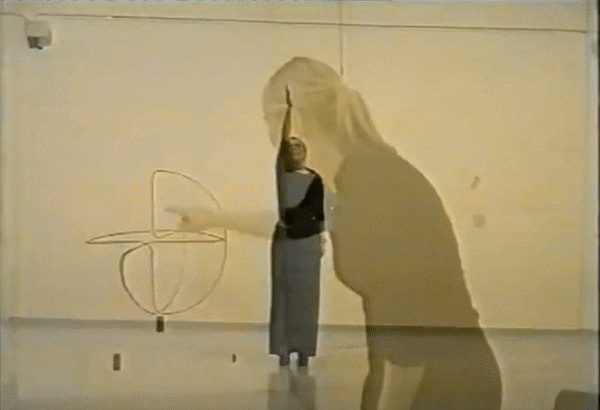Materiality of Language final: Laban-ese Gibberish (asemic dance notation pt. 2)
- Gabriella Garcia

- May 6, 2020
- 2 min read
My final is fairly simple, especially in consideration of all the very detailed work delivered by my incredible classmates last week. I focused on a redux of my third assignment, which used polylines and glyphs to mimic dance notation. I had left the assignment with two goals: legibility and order. (Pt 1 for reference)
I started digging into dance notation techniques and became obsessed with Rudolf Laban, who created the "kinesphere" notion, which is "the sphere around the body whose periphery can be reached by easily extended limbs without stepping away from that place which is the point of support when standing on one foot.” Laban also developed a similar method for floor paths to be followed by dancers. The notation is actually strikingly similar to polyline drawing, so I became obsessed with replicating it:
He also developed it to notate floorpaths:

I still wanted to carry some of the contrasting element of my first attempt in assignment 3, so I kept the asemic music scoring in my pieces. I also really liked the idea of symmetry of my original inspiration, so I decided to mirror the notation. This definitely still falls into the realm of asemic, as I'm sure it's actually Laban-ese gibberish.
But I think the result has potential for interpretation along the path. How can movement be directed by the thickness of the stroke? If followed as a floor path rather than a kinescope, can the glyphic character notating each polyline point change the behavior of the dancer, what Laban calls effort (space, weight, time, flow)? I think though working with a choreographer or dancer would help create a language out of this, an opportunity for choreographic intervention.
Here are some favorite examples, and the final code: https://github.com/stabriella/MOL2020/blob/master/Final_asemicDanceNotationRedux.ipynb
I also found this really great project by the Interactive Architecture Lab in which dance is notated sculpturally. I think it's a really striking example of materializing notation:
From the project: Performance is presented as a process of fabrication. Reciprocally, fabrication is presented as a process of performance. A circularity of human body-gesture and computer machine-gesture leads to the construction of notational spatial artefacts.
















Comments